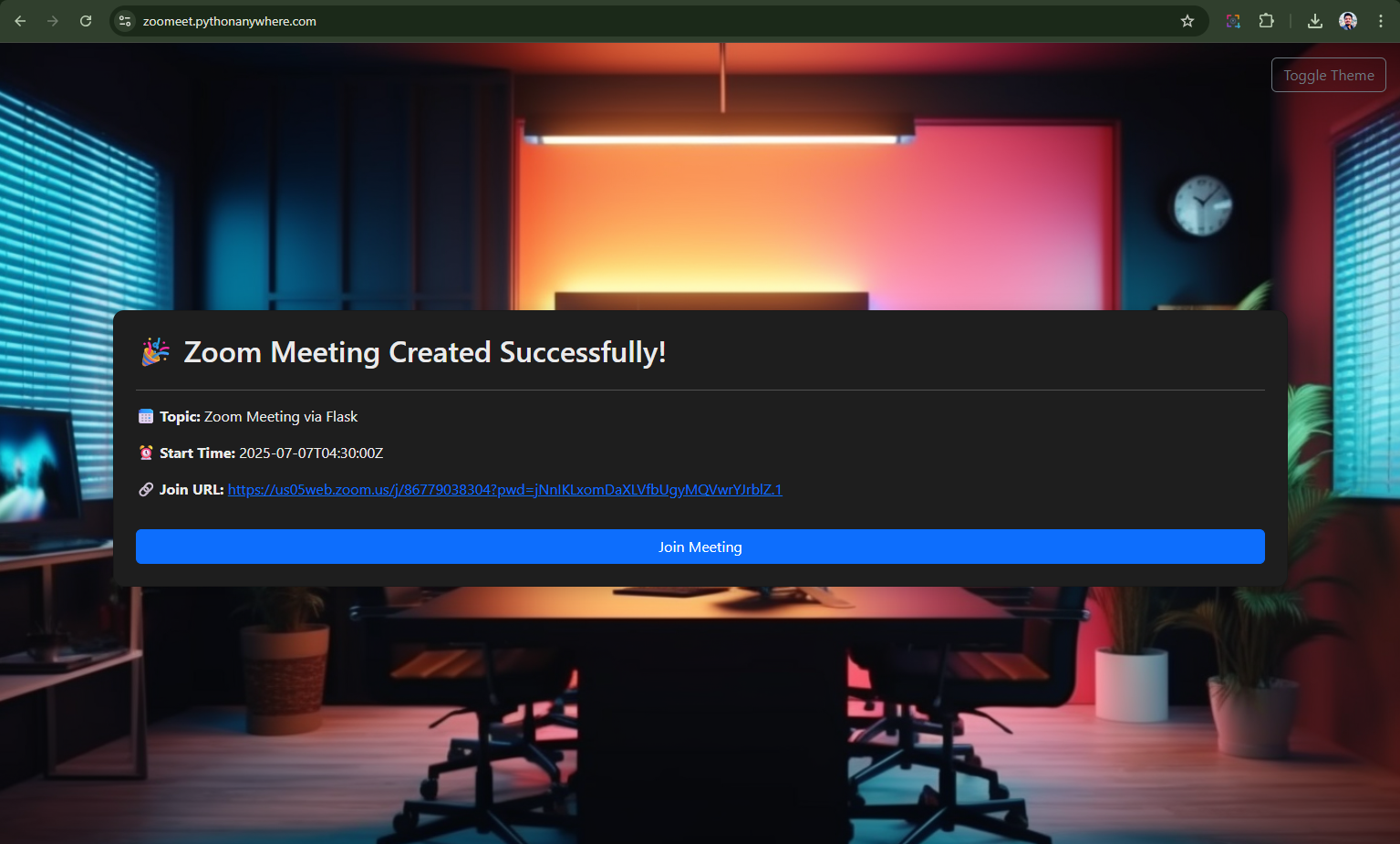🔗 Schedule Zoom Meetings with Python using OAuth2
Want to create Zoom meetings using a simple Python script without diving into Django or Flask? This guide walks you through everything step-by-step — from setting up your Zoom App to scheduling meetings via API.
👉 View Full Source Code on GitHub
📦 What You’ll Need
-
A Zoom account (Free/Pro)
-
Python 3.6+
-
Internet connection 😄
🧰 Step 1: Install Required Python Packages
pip install requests requests-oauthlib
🛠️ Step 2: Create a Zoom OAuth App
-
Go to Zoom App Marketplace
-
Click Develop → Build App
-
Choose OAuth and click Create
-
Choose General App, give it a name
-
Under Redirect URL, enter:
http://localhost -
Save and continue
🔑 Step 3: Get Client ID and Secret
In the App Credentials section:
-
Copy the Client ID
-
Copy the Client Secret
-
You'll use these in the Python script
🔐 Step 4: Add Required Scopes
Click Scopes and add:
| Category | Scope |
|---|---|
| Meeting | meeting:read, meeting:write |
| User | user:read |
Then click Done → Continue → Activate your app.
✅ Output
After you run it, the script will:
-
Open your browser to authorize
-
Print a working Zoom meeting link:
✅ Meeting created! Join URL: https://us05web.zoom.us/j/xxxxxxxxx?pwd=xxxx
You can open it in your browser or mobile Zoom app.
🛡️ Important Security Tip
Do NOT push your client_secret or access tokens to GitHub.
Use .env files or environment variables instead. If you do publish code, remove secrets first.

💾 Full Code on GitHub
You can find the complete project here:
👉 github.com/imvickykumar999/Zoom-Meeting-API
🙌 Final Thoughts
Now you can:
-
Authenticate securely via OAuth2
-
Schedule meetings programmatically
-
Automate Zoom workflows using Python
If you’d like to go further (e.g., list meetings, download recordings, send invites), feel free to comment or contribute to the repo.
Happy coding 👩💻🎥









0 Comments